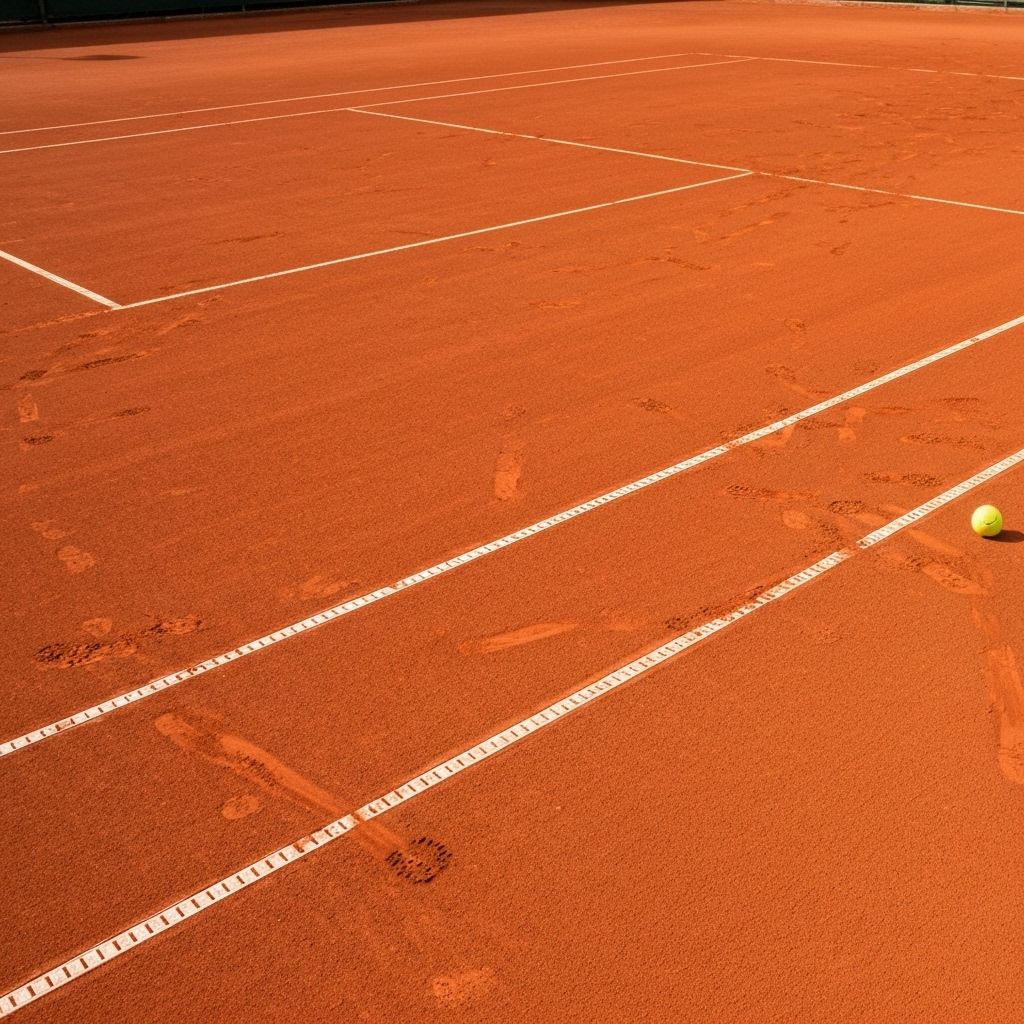Hard Court vs Clay Court: Equipment Differences

Hard Court vs Clay Court: Equipment Differences
Different court surfaces require different equipment considerations. Understanding these differences can help you optimize your performance and extend the life of your gear.
Court Surface Basics
Hard Courts
- Most common surface worldwide
- Medium-fast pace
- Consistent bounce
- More wear on equipment
Clay Courts
- Slower pace
- Higher bounce
- More sliding
- Easier on the body
Grass Courts
- Fastest surface
- Lowest bounce
- Least common
- Requires specialized equipment
Shoe Selection by Surface
Hard Court Shoes
Key Features:
- Durable outsole
- Extra cushioning
- Modified herringbone pattern
- Reinforced toe cap
Top Picks:
- Nike Court Air Zoom Vapor Pro
- ASICS Gel-Resolution 9
- Adidas Barricade
Clay Court Shoes
Key Features:
- Full herringbone pattern
- Less cushioning needed
- Designed for sliding
- Prevents clay buildup
Important: Never wear clay court shoes on hard courts - the soft outsole will wear out quickly!
Racket Considerations
While you can use the same racket on all surfaces, some adjustments can help:
For Clay Courts
Consider:
- Slightly lower string tension (2-3 lbs less)
- More spin-friendly strings
- Lighter rackets for longer rallies
For Hard Courts
Consider:
- Standard tension
- More durable strings
- Slightly heavier rackets for stability
String Selection
Hard Courts
Best Options:
- Durable polyester strings
- Hybrid setups for longevity
- Higher gauge (thicker) strings
Why: Hard courts are abrasive and break strings faster
Clay Courts
Best Options:
- Spin-friendly polyester
- Lower gauge (thinner) strings
- Full polyester setups
Why: Clay is less abrasive, allowing for thinner, more spin-friendly strings
Ball Differences
Hard Court Balls
- Extra duty felt
- More durable
- Slightly heavier
Clay Court Balls
- Regular duty felt
- Lighter construction
- Better for slower surfaces
Pro Tip: Using the wrong ball type can significantly affect play quality!
Apparel Considerations
Clay Courts
- Lighter colors show clay stains
- More breathable fabrics needed
- Extra socks recommended
Hard Courts
- Any color works
- Focus on durability
- UV protection important
Maintenance Tips
After Playing on Clay
- Clean shoes thoroughly
- Remove clay from racket strings
- Wipe down racket frame
- Air out bag and gear
After Playing on Hard Courts
- Check shoes for wear
- Inspect strings for fraying
- Clean racket grip
- Check for frame damage
Cost Considerations
Hard Courts
- Shoes wear faster (replace every 3-4 months)
- Strings break more frequently
- Higher equipment costs overall
Clay Courts
- Shoes last longer
- Strings last longer
- Lower equipment costs
- But: more cleaning required
Making the Transition
From Hard to Clay
Adjustments Needed:
- Learn to slide properly
- Adjust footwork patterns
- Expect longer rallies
- Be patient with points
From Clay to Hard
Adjustments Needed:
- Quicker footwork
- More aggressive play
- Adjust to faster pace
- Protect your joints
Equipment Recommendations by Level
Beginners
- Start with all-court shoes
- Use durable strings
- Don't worry too much about surface-specific gear
Intermediate
- Invest in surface-specific shoes
- Experiment with string tensions
- Consider having multiple rackets
Advanced
- Multiple shoe options
- Surface-specific string setups
- Customized equipment for each surface
Conclusion
While you don't need completely different equipment for each surface, understanding these differences can help you make smarter choices. At minimum, invest in proper shoes for your primary playing surface and adjust your string tension accordingly.
Remember: the best equipment is the equipment that helps you play your best tennis, regardless of the surface! ```
```json file="" isHidden
David Chen
Tennis Equipment Expert